研究成果

Feb, 2025
The rapid development of deep learning has revolutionized medical image processing, including analyzing whole slide images (WSIs). Despite the demonstrated potential for characterizing gene mutations directly from WSIs in certain cancers, challenges remain due to image resolution and reliance on manual annotations for acute myeloid leukemia (AML). We, therefore, propose a deep learning model based on multiple instance learning (MIL) with ensemble techniques to predict gene mutations from AML WSIs. Our model predicts NPM1 mutations and FLT3-ITD without requiring patch-level or cell-level annotations. Using a dataset of 572 WSIs, the largest database with both WSI and genetic mutation information, our model achieved an AUC of 0.90 ± 0.08 for NPM1 and 0.80 ± 0.10 for FLT3-ITD in the testing...

Feb, 2025
Lung cancer is the most common cause of cancer mortality globally, and the prevalence of lung adenocarcinoma, the most common lung cancer subtype, has increased sharply in East Asia. Early diagnosis leads to better survival rates, but this requires an improved understanding of the molecular changes during early tumorigenesis, particularly in nonsmokers. In this study, we performed whole-exome sequencing and RNA sequencing of samples from 94 East Asian patients with precancerous lesions [25 with atypical adenomatous hyperplasia (AAH); 69 with adenocarcinoma in situ (AIS)] and 73 patients with early invasive lesions [minimally invasive adenocarcinoma (MIA)]. Cellular analysis revealed that the activities of endothelial and stromal cells could be used to categorize tumors into molecular...

Jan, 2025
Background: Ovarian cancer is one of the top seven causes of cancer deaths. Incidence of ovarian cancer varies by ethnicity, where Asian women demonstrate lower incidence rates than non-Hispanic Blacks and Whites. Survival prediction models for ovarian cancer have been developed for Caucasians and Black populations using national databases; however, whether these models work for Asians is unclear. Therefore, a retrospective cohort study was conducted to develop survival prediction models for patients with epithelial ovarian cancer from a Taiwan Cancer Registry (TCR) who underwent de-bulking and chemotherapy, with the aim to identify variables that can predict prognosis accurately. Patients diagnosed with OC from TCR were included. Method: Two prognostic models (M1 and M2) were developed:...
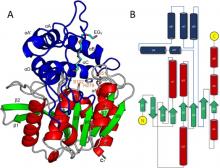
Jan, 2025
Poly((R)-3-hydroxybutyrate) (PHB) is a microbial biopolymer widely used in commercial biodegradable plastics. PHB degradation in cell is catalyzed by PHB depolymerase (PhaZ), which hydrolyzes the polyester into mono- and/or oligomeric (R)-3-hydroxylbutyrates (3HB). A novel intracellular PhaZ from Bacillus thuringiensis (BtPhaZ) was identified for potential applications in polymer biodegradation and 3HB production. Herein, we present the crystal structure of BtPhaZ at 1.42-Å resolution, making the first crystal structure for an intracellular PhaZ. BtPhaZ comprises a canonical α/β hydrolase catalytic domain and a unique α-helical cap domain. Despite lacking sequence similarity, BtPhaZ shares high structural homology with many α/β hydrolase members, exhibiting a similar active-site...
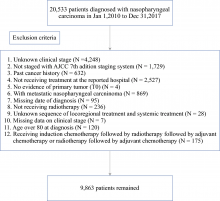
Dec, 2024
Objective: The aim of this study was to evaluate the efficacy of different treatment intensities (TIs) in patients with nasopharyngeal carcinoma (NPC). Methods: The study assessed newly diagnosed, non-metastatic NPC patients from the Taiwan Cancer Registry between 2010 and 2017. TIs were divided into four groups: TI1 [radiotherapy (RT) alone or induction chemotherapy (IC) followed by RT); TI2 (concurrent chemoradiotherapy (CRT) alone); TI3 (IC followed by CRT or CRT followed by adjuvant chemotherapy (AC)]; and TI4 (IC followed by CRT followed by AC). The primary outcome was cancer-specific survival (CSS). Results: The study included 9863 patients. For stage I-II NPC patients, there was no significant difference in CSS among the different TI groups. For stage III patients, those receiving...

Dec, 2024
Introduction: The population of Taiwan has a long history of ethno-cultural evolution. The Taiwanese population was isolated from other large populations such as the European, Han Chinese, and Japanese population. The Taiwan Biobank (TWB) project has built a nationwide database, particularly for personal whole-genome sequence (WGS) to facilitate basic and clinical collaboration nationally and internationally, making it one of the most valuable public datasets of the East Asian population.
Objectives: This study provides comprehensive medical genomic findings from TWB WGS data, for better characterization of disease susceptibility and the choice of ideal treatment regimens in Taiwanese population.
Methods: We reanalyzed 1496 WGS using a PrecisionFDA Truth challenge winner method Sentieon...
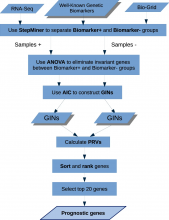
Oct, 2024
Cancer prognosis requires precision to identify high-risk patients and improve survival outcomes. Conventional methods struggle with the complexity of genetic biomarkers and diverse medical data. Our study uses deep learning to distil high-dimensional medical data into low-dimensional feature vectors exploring shared patterns across cancer types. We developed a multi-task bimodal neural network integrating RNA Sequencing and clinical data from three The Cancer Genome Atlas project datasets: Breast Invasive Carcinoma, Lung Adenocarcinoma, and Colon Adenocarcinoma. Our approach significantly improved prognosis prediction, especially for Colon Adenocarcinoma, with up to 26% increase in concordance index and 41% in the area under the precision-recall curve. External validation with Small Cell...
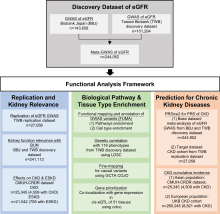
Oct, 2024
Current genome-wide association studies (GWAS) for kidney function lack ancestral diversity, limiting the applicability to broader populations. The East-Asian population is especially under-represented, despite having the highest global burden of end-stage kidney disease. We conducted a meta-analysis of multiple GWASs (n = 244,952) on estimated glomerular filtration rate and a replication dataset (n = 27,058) from Taiwan and Japan. This study identified 111 lead SNPs in 97 genomic risk loci. Functional enrichment analyses revealed that variants associated with F12 gene and a missense mutation in ABCG2 may contribute to chronic kidney disease (CKD) through influencing inflammation, coagulation, and urate metabolism pathways. In independent cohorts from Taiwan (n = 25,345) and the United...
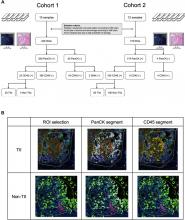
Oct, 2024
Ovarian clear cell carcinoma (OCCC) has a high incidence in Asia, with a frequent occurrence at an early stage, but without sufficient data on molecular stratification for high-risk patients. Recently, immune-hot features have been proposed as indicators of poor prognosis in early stage OCCC. Specific patterns of intratumoral heterogeneity associated with immune-hot features must be defined. NanoString Digital Spatial Profiling technology (Cold spring biotech corp.) was used to decipher the spatial distribution of the 18-plex protein panel. Regions of interest (ROIs) were collected based on the reference hematoxylin and eosin-stained morphology. Areas of illumination (AOIs) were defined according to the ROI segmentation using the fluorescence signals of the visualization markers pan-...
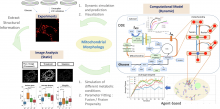
Oct, 2024
Cellular bioenergetics and mitochondrial dynamics are crucial for the secretion of insulin by pancreatic beta cells in response to elevated levels of blood glucose. To elucidate the interactions between energy production and mitochondrial fission/fusion dynamics, we combine live-cell mitochondria imaging with biophysical-based modeling and graph-based network analysis. The aim is to determine the mechanism that regulates mitochondrial morphology and balances metabolic demands in pancreatic beta cells. A minimalistic differential equation-based model for beta cells is constructed that includes glycolysis, oxidative phosphorylation, calcium dynamics, and fission/fusion dynamics, with ATP synthase flux and proton leak flux as main regulators of mitochondrial dynamics. The model shows that...